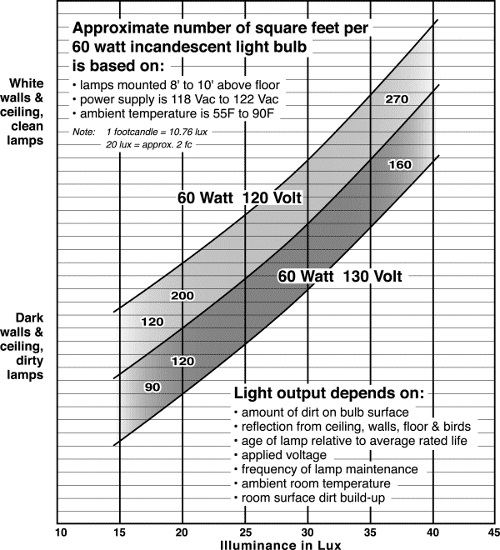Basic husbandry for turkeys
Learn basic husbandry information for raising commercial turkeys.
ISSN 1198-712X, Published February 1993
| Criteria | Norms during growth | Norms after maturity | Trouble shooting checklist |
|---|---|---|---|
| Temperature (at birds height) | Under brooders:
|
|
|
| Ammonia (ppm) |
|
|
|
| Air movement |
|
|
|
| Lighting |
| Daylight Interval:
| Too high: cannibalism, flighty, nervous behaviour. Too low: poor intakes, poor growth and feed conversion. |
| Feeder space (per bird) — ad lib Water trough (per bird) |
| 12 weeks to mature:
|
|
| Density — Floor or cage space (per bird) | Hens:
Toms:
| Hens:
Toms:
|
|
Handy hints
Humans can detect the smell of ammonia at 7 ppm.
When human eyes are affected (watering/burning), ammonia levels are at least 20 ppm.
| Fan diameter in inches | Fan capacity, cfm |
|---|---|
| 8 | 200 |
| 10 | 400 |
| 12 | 1000 |
| 14 | 1500 |
| 16 | 2000 |
| 18 | 3000 |
| 20 | 4000 |
| 24 | 5000 |
| 30 | 7000 |
| 36 | 10000 |
Accessible description of Figure 1
Example (real barn)
A maintained light level of 20 lux may be achieved by using one standard 60 watt/120 volt incandescent bulb for every 200 square feet of floor space, or by using one long-life 60 watt/130 volt incandescent bulb for every 120 square feet of floor space in a dark barn.
Example (research lab)
A white clean room will have 40 lux with about one lamp per 280 square feet, or about 20 lux if one bulb per 560 square feet is used.
Save energy:
- Use 9 watt to 11 watt compact fluorescent lamps instead of 60 watt/130 volt incandescent bulbs.
- Use 13 watt to 15 watt compact fluorescent lamps instead of 60 watt/120 volt incandescent bulbs.
Accessible image description
Figure 1. Guideline: Lamping requirements for poultry chart. Shows number of square feet per 60 watt bulb.
The number of square feet per light bulb increases as you go from dark walls, ceiling and dirty lamps to white walls, ceiling and clean lamps. The number of square feet also increases as the illuminance (in lux) increases. The number of square feet per 60 watt 120 volt incandescent light bulb is always more at a specific illuminance (in lux) than the number of square feet per 60 watt 130 volt incandescent light bulb at the same specific illuminance (in lux).
Approximate number of square feet per 60 watt incandescent light bulb is based on:
- lamps mounted 8' to 10' above floor
- power supply is 118 Vac to 122 Vac
- ambient temperature is 55 °F to 90 °F
Note:
- 1 footcandle = 10.76 lux
- 20 lux = approximately 2 footcandles
Light output depends on:
- amount of dirt on bulb surface
- reflection from ceiling, walls, floor and birds
- age of lamp relative to average rated life
- applied voltage
- frequency of lamp maintenance
- ambient room temperature
- room surface dirt build-up
